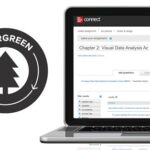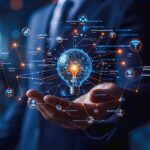COVID ushered forth a dramatic and immediate change in learning–namely, a massive pivot to online learning. Faced with closing physical campus classrooms, colleges and universities took quick stock of their online capabilities in order to sustain learning.
And now, with students back on campus and with lecture halls full once more, the question remains: What did higher ed learn from COVID, and what STEM teaching and learning strategies should remain in place as we creep back toward normalcy?
Make time for this eCampus News webinar featuring a panel of experts who will discuss the four categories of STEM learning and how institutions can meet the changing needs of STEM instruction on campus.
- 6 key cybersecurity hiring trends - July 3, 2025
- Digital innovation and human connection are reshaping higher ed - June 30, 2025
- Amid uncertainty, IT leaders outline priorities for higher ed - June 27, 2025
More from eCampus News
McGraw Hill Transitions from Traditional Textbook Edition Publishing Cycle with New Evergreen™ Delivery Model
COLUMBUS, Ohio (GLOBE NEWSWIRE) — McGraw Hill announced the launch of an industry-first delivery model that releases digital product updates directly to existing courses already built by instructors, replacing the…
How we connect incoming students to the university resources they need
“I wish I had known.” How many times did my seniors say they regretted not knowing about all the resources available to them such as the food pantry, emergency funds, and networking with alumni.
6 key cybersecurity hiring trends
Cybersecurity professionals and hiring managers face growing budget constraints, making it increasingly difficult to recruit, build, and retain resilient and effective teams.
The AI world of tomorrow is today–and it’s already reshaping higher education
Just two years ago, artificial intelligence was largely regarded as a support tool–a curiosity more than a collaborator. Then came ChatGPT in late 2022, and suddenly AI wasn’t just part of the academic conversation; it was the conversation.
AI and the workforce: Reskill to meet the moment
Business leaders continue to see tremendous opportunity in artificial intelligence and its ability to deliver efficiency, savings, and growth to their organization. But while AI’s potential continues to grow, no organization can capitalize on it without an engaged and AI-savvy workforce.
Digital innovation and human connection are reshaping higher ed
Five years after the pandemic drove a move toward online learning and three years into the transformative, widespread use of generative AI tools, the higher education teaching and learning ecosystem continues to adjust and evolve.





